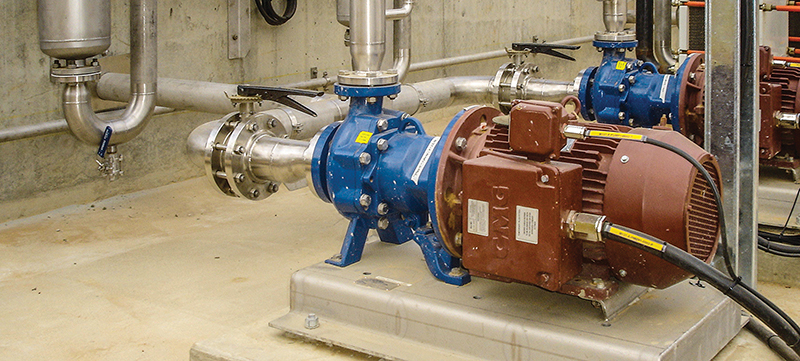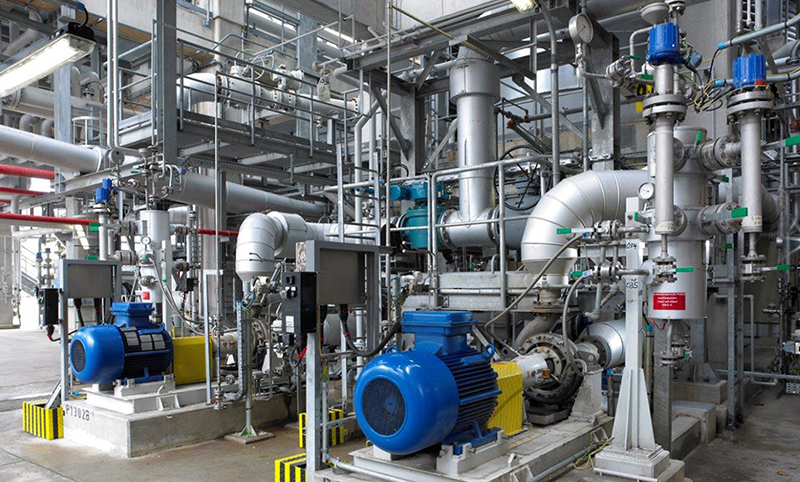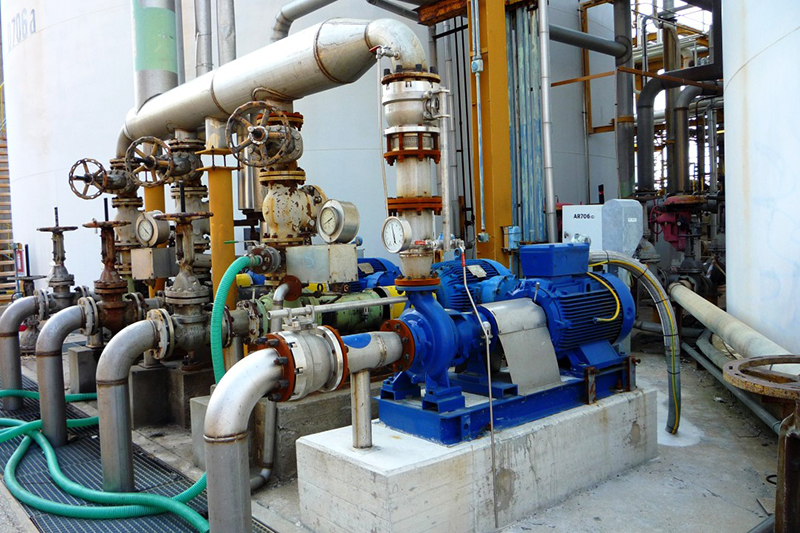The chemical industry relies heavily on various types of pumps to ensure the safe and efficient handling of chemicals. Pumps transfer chemicals between processing stages, storage tanks, and transportation vessels. The choice of the pump depends on the properties of the chemical being handled, such as temperature, viscosity, and corrosiveness. Centrifugal, diaphragm, piston, and peristaltic pumps are common types used in the chemical industry.
These industrial pumps play a critical role in maintaining the integrity of chemical processes and ensuring worker and environmental safety. In addition, these pumps are necessary for the chemical industry to avoid many challenges in handling chemicals, making them essential for smooth functioning.
Engineers in the chemical field must create and sustain systems that operate with chemicals in numerous industries, including but not limited to food manufacturing, farming, oil refining, and power production. Therefore, they must know industrial pump types to ensure the chemical systems’ proper functioning. Many types of pumps are available and serve different purposes based on industry requirements.
Pumps are classified into two main categories based on their mode of operation: positive displacement or centrifugal. To further classify them, their design is considered, resulting in various sub-types.
Various Kinds Of Pumps Utilized In The Chemical Industry
-
Centrifugal Pumps
The centrifugal pump is a positive-displacement pump that requires no wall suction near the liquid level. Instead, it moves liquids and gases by utilizing an electric motor or engine. They are commonly used for high-volume pumping tasks because they are built to operate with low head pressure.
The science behind these pumps involves impeller blades that move fluids by shifting fluid pressures toward the center of rotation and auxiliary equipment like piping support assemblies, valves, and pumps for transferring liquids through pipes. This uniform velocity flow makes it well-suited for feeder systems in chemical industries.
-
Gear Pumps
The Gear pump is a type of positive-displacement rotary piston pump that operates by converting the back-and-forth linear motion of pistons into an elliptical surface resembling gears. This design increases the contact area between the pump material and the pumped fluid, resulting in efficient and effective transfer.
The cogs interlock the gears made of tough plastics or vulcanized rubber, and the teeth match their respective sizes.
Multiple gearing ratios are available for clockwise and counterclockwise rotation, enhancing efficiency at various rotational speed ranges, with low speed being more suitable for low-pressure applications.
Gear pumps are utilized in various types of equipment, including laboratory reactors, paint turbines, and fluid power systems, that require chemical resistance and suction lift capabilities. Additionally, they are frequently employed in breweries to transfer fluid within tanks and refrigerators.
-
Screw Pumps
Except for the “screw effect” of a rapidly rotating helix threaded within a long pipe, screw pumps operate similarly to standard rotary pumps. With every turn of the screw, the liquid is squeezed and forced to move through one end of the pump.
Positive displacement screw pumps use a rotating helical screw inside a progressively tapered pipe to move liquids or fluids from an open to a closed end. The pressure builds up as the fluid moves through the taper, resulting in increased pressure at the closed end, which forces more fluid out.
These pumps are commonly used for irrigation and hydroelectric power generation and are also classified as positive displacement pumps.

-
Rotary Vane Pumps
Rotary vane pumps are suitable for liquid transfer between different locations, and they can be installed externally to the system being pumped, including air or gas compressors. These pumps are positive displacement pumps and use linear pistons to drive fluid through an impeller lacking circular vanes. Instead, the impeller creates a swirling rotation that moves liquid from an expanding chamber to an expelling chamber.
The development of rotary vane pumps dates back to the 1930s when the two World Wars caused a significant energy crisis. At the time, the rapid expansion of oil fields with low-pressure wells and water swamps prompted the need for a new type of pump technology.
-
Piston Pumps
A piston pump is a rotary positive displacement pump pressuring fluid for a return or supply system using the engine’s energy. It can operate in a closed circuit with one port exposed to the atmosphere and another on the opposite side as the primary circuit valve or a closed circuit with two ports open to the atmosphere.
Piston pumps are often called “bottom-suction” pumps because their suction nozzles are at the bottom of cylindrical casings. Depending on their intended pressure depth, they may also be called “deep-well” pumps.

-
Diaphragm Pumps
One of the most frequently used positive displacement pumps is the diaphragm pump, which operates by balancing forces in the system to transport fluids from one side. The membrane divides and connects chambers on either side, creating a pressure difference. The pump body houses a tube or pipe where a plunger fits snugly.
A vacuum is created when the plunger is pushed down, which draws the liquid up the pipe and into a reservoir positioned on top of or adjacent to the pump. The slide action is allowed to continue by the release valve, which prevents the fluid from being pulled back into the pipe or tube.
Diaphragm pumps have gained popularity due to their simple construction, ease of use, and reliable performance, making them a cost-effective and long-lasting option for applications that require high reliability and easy maintenance. In addition, unlike other pumps that displace fluids uphill, these pumps increase displacement by displacing downhill fluids, contributing to their efficiency.
However, diaphragm pumps are not commonly used in the chemical industry due to their complexity and lack of advantages compared to other pumping systems.
-
Regenerative Piston Pumps
A turbine pump is a mechanical device that can move gas or liquid to a desired height.
The conventional configuration of a turbine pump involves a housing that submerges an impeller in the fluid that requires pumping. As a result, the impeller can freely rotate without contact with the fluid, which sets it apart from other pump types.
The impeller rotates, capturing a portion of the liquid (or gas), and propels it through the pipeline to areas where it is required more than its upstream locations, making it easier to lift to higher levels.
This pump is unique because it utilizes hydrodynamic fluid forces to propel liquid through the pipeline instead of the centrifugal force employed by other pumps. Its simplicity and lack of gears or pistons also contribute to its high-pressure output, making it advantageous in certain applications.

Conclusion
Different types of pumps play a critical role in the transfer and movement of fluids during different production stages. The availability of various pumps like centrifugal, positive displacement, gear, peristaltic, magnetic drive, and turbine pumps provides the industry with the flexibility to select the best-suited pump for each application. In addition, each pump has advantages and disadvantages, making it useful for a specific use case.
Additionally, using the magnetic drive and turbine pumps improve safety and efficiency in handling hazardous chemicals and volatile fluids and properly selecting the appropriate industrial pump based on the application’s requirements, like flow rate, pressure, viscosity, and chemical compatibility.


